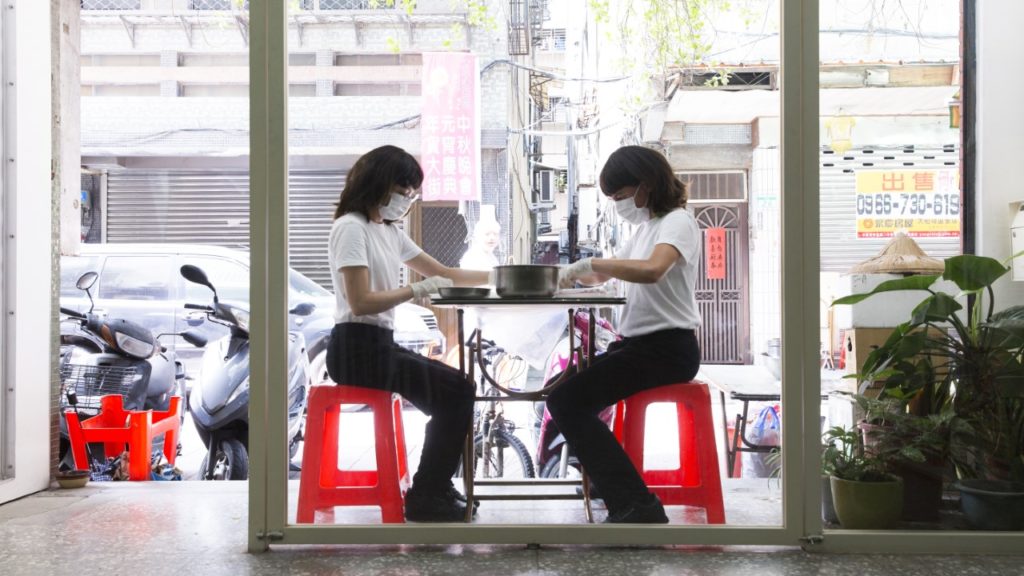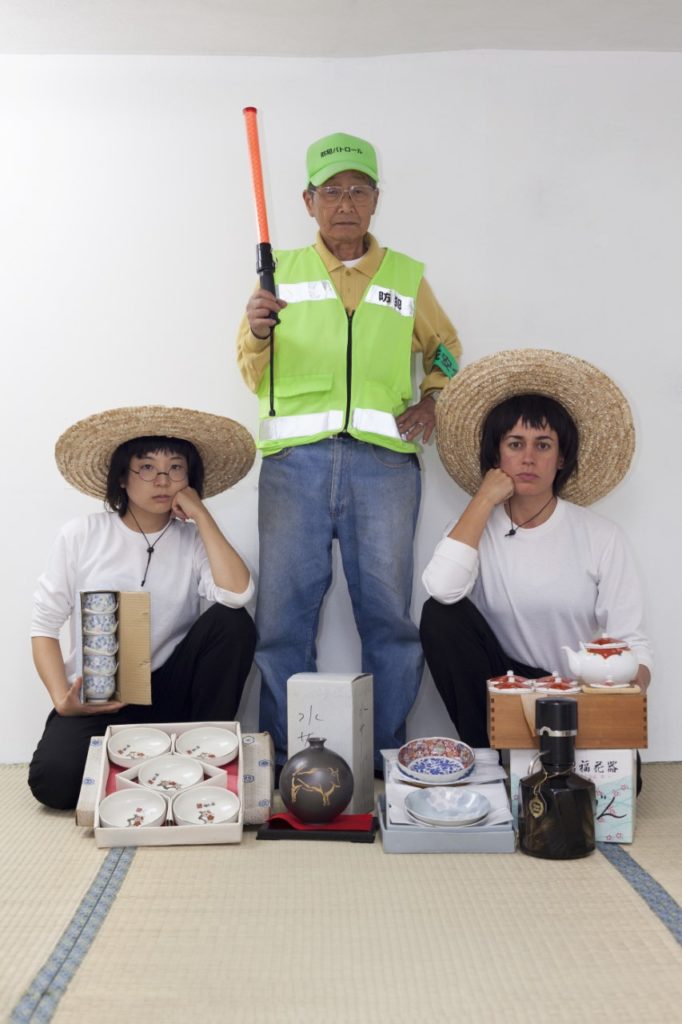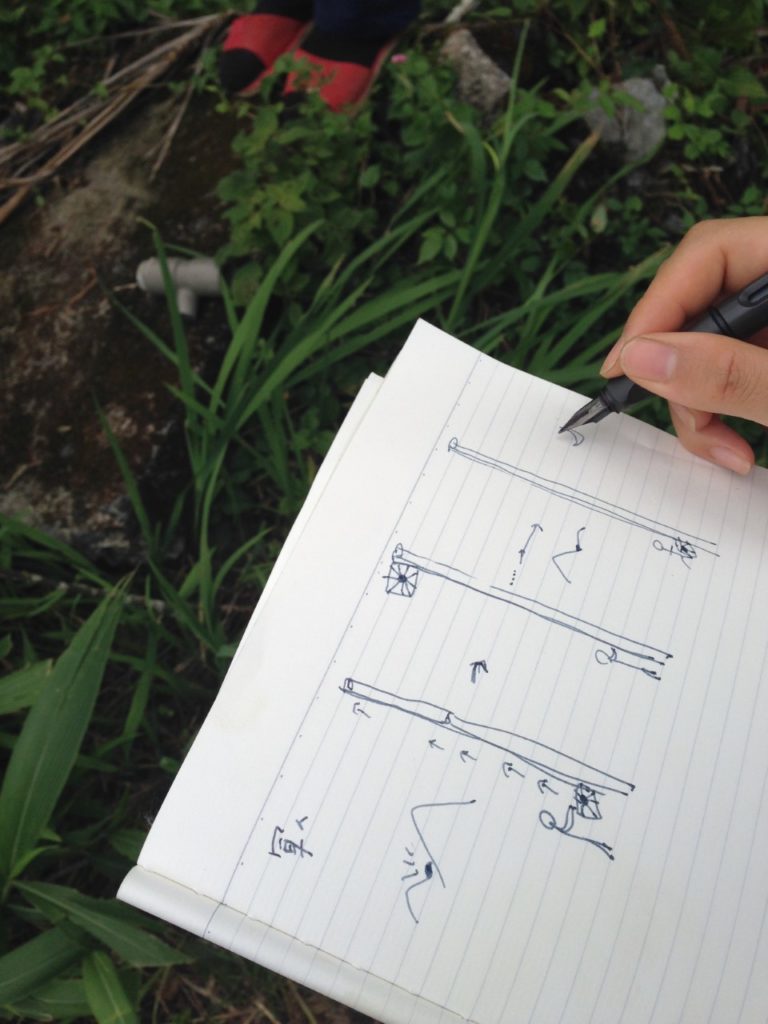A conversation with artists Mayumi Arai and Nina Willimann who met in the first edition of Transcultural Collaboration in 2015. Throughout the past three years and despite being based as far apart as Zurich and Tokyo, they have continued to work together and have evolved their research and practice by exploring several fields of interest making use of a myriad of artistic means in the context of residency programs around the world. On October 20, they will be part of the exhibition opening and performance day SPOKEN / UNSPOKEN taking place in McaM’s villa in Shanghai.
FINDING COMMON GROUND
Can you share the story of why you started to collaborate? Mayumi: It started with the Transcultural Collaboration programme of the year 2015 in Zurich. We had to present three topics of personal interest. One of mine was Folk Dance. Soon after, it turned out that Nina had herself been very involved with the topic. Nina: Yes, that was the first connection. Then we undertook a shared research on Swiss Folk dance and co-realized a video work. From there we just kept going and found that we shared many more interests.
With Nina being trained in Dance and Mayumi in Fine Arts, the two of you descend from quite different artistic backgrounds. Aside from shared interests, have you had any other common denominator? Nina: I think method-wise we are on a quite similar track. In an earlier project I worked with ethnographic and sociological tools and Mayumi’s approach is highly site-specific. We both are interested in a research that is community-based, long-term and immersive. Mayumi: Yes, we have a related way of developing ideas by rooting them in a certain context.
Many of this year’s participants struggle with creating a work that feels unified and consistent and not merely glued together especially when it comes to the question of what kind of media to use. What is your strategy there? Nina: Basically, we don’t care about the media. For us, the use of a medium results from the content and not the other way round. For that reason, the outcome varies. Sometimes the result is a performance, sometimes we fabricate actual objects. We use different means according to what the project needs. Mayumi: In this way we are both very free. In a way, we don’t care too much about our own artistic backgrounds. We don’t feel like we absolutely need to do this or that. Nina: Right. For example the last project we did was an embroidery work and the one before that was a text. So, virtuosity in a certain discipline isn’t one of our main concerns. But once we are decided on something, we do it full-on by being very strict about the rules we set for ourselves. You see, in the beginning our communication skills were very limited. Therefore we developed an approach that was mainly based on experience. Mayumi: That’s why our work was more about the practical and sensory level. Nina: And one of the things I learned is the importance of not insisting on something. Not to cling to your own idea. It’s not about your own idea but about what evolves in between. It’s not easy though.
PLACE BETWEEN PERSPECTIVES
You live in Switzerland and Japan. Under these circumstances, how do you achieve a site-specific concept? Nina: We always work with the place where we meet and, so far, that happened mostly in the context of residencies. In the last three years we worked in Switzerland, Taiwan, Japan, China and Hong Kong. Each time we meet in a specific place and time frame without a preconceived idea of what will happen.
No idea whatsoever? Nina: Of course, sometimes we carry along a certain concept. This is for example the case with our current work The Gift Exercise which is about hospitality and comprises a series of different site-specific sub-projects called invitations. The aim of our work here is to explore the cultural techniques about how to meet the foreign, the foreigner or “the other” in a given place or country. It’s an ongoing project but keeps on taking different forms according to the site-specific context.
In your portfolio you mention that your methodological approach when working with a local community is auto-ethnographic. What do you mean by that? Mayumi: The term refers to a focus on our own gaze. We share the assumption that when we look at a certain community we project ourselves onto what or whom we observe. This implies that while we observe them, we actually observe ourselves. Nina: Yes, we emphasise the how and why we observe and interpret social phenomena the way we do. We adapted the notion from anthropology. In the 1970s, researchers started to question their own position and how this position influenced the way they perceived “the other”. Reflecting our own histories and bodies is essential, not least because we often work in sensitive sites where European or Japanese colonialisation have impacted communities, the local history and the collective memory.
I imagine that working as a duo is helpful to highlight the socially attained gaze that you’re addressing. Nina: Yes, I would say so. Especially because one of us is usually more familiar with the culture we are working in and, in that sense, has more the role of a host whilst the other one is more of a guest. Rarely are both of us complete cultural foreigners. Mayumi: Right. When I’m culturally surprised at something, I tell Nina about it, or the other way round, and we reflect on it together. By way of an auto-ethnographic approach we investigate why we feel a certain distance from a social phenomenon. It brings to light a mode of interpretation that is beyond the personal, namely historical, cultural or gendered. Nina: Moreover, we don’t only reflect on our subjects and our own perspectives but also on our relationship. We try to attain a triangular gaze, if you will.
Do you recall an instance when you found your own perspective changed in the course of a research? Mayumi: A good example is a project that we initiated in 2016 with an aboriginal community living in the mountainous area in the east of Taiwan. Our research on the Japanese and European colonisation of Taiwan was highly influenced by our hosts’ perspective. We learned a lot from them. Only afterwards we began to study the topic in “official” history records. Nina: At the time we we’re concerned with the colonial histories of our own countries. Mayumi: During U.S. occupation in Japan, some local war records were seized and, up to this day, kept in the National Library in Washington D.C. which is where I went to study them. Strangely enough, the information is very hard to get a hold of in Japan but openly accessible in the United States. Through this research I gained an official Japanese point of view from that era, while Nina had studied European records. We brought back our findings to the indigenous tribe in Taiwan in order to confront different perspectives on the, supposedly, same history. It was very impressive to see the gaps between the narratives we’d brought together.
TRANSLATION BEYOND WORDS
What are we to expect from your side for the upcoming exhibition SPOKEN / UNSPOKEN at the McaM in Shanghai? Mayumi: We will be showing and distilling some of our work from the past three years. Nina: We want to share some strategies of communication that we’ve developed. We are often confronted with situations in which we can’t rely on a common language. For that reason, we keep asking ourselves how to translate contents from one language to another on a non-verbal level. One strategy we use is painting. It’s a method we used early on in our collaborations. It was our main tool for communication with our Taiwanese host family for example. Also and especially when discussing the local history. Another strategy is synchronization. In the TC programme in Hong Kong we worked on a series of projects called How to disappear (completely) based on our experience of learning Taichi. We learned by synchronizing our movements with the teacher’s and with each other’s. Through the physical experience of learning very simple Taichi-poses we also picked up some basic concepts about Chinese philosophy. We used the same technique in the Folk Dance project. And, lastly, there’s the strategy of the exchange. Often we offer a gift or an exchange to people as a way of initiating a communication process. In Japan for example, we lived in an empty space which led us to proposing to locals to lend us everything we needed for a living (like furniture, food, etc.) in exchange for all kinds of services. The gift is another level of this. During a residency in the Swiss Jura mountains, we got a huge pumpkin from one of our neighbours and made 500 cookies out of it. Each villager received one cookie together with a dinner invitation. And on a particularly hot day in Taipei, we gave away Oshibori to people (Japanese hot towels made of gauze fabric—a material used for curing wounds) to wash and refresh the face. This was also meant as a reflection on colonialism. But during the past few weeks in Shanghai we’ve been focusing more on communication interfaces. So on Saturday, besides addressing several of our former projects we will display some of our most recent explorations.
>> To learn more about Nina and Mayumi’s work visit willimannarai.tumblr.com.



